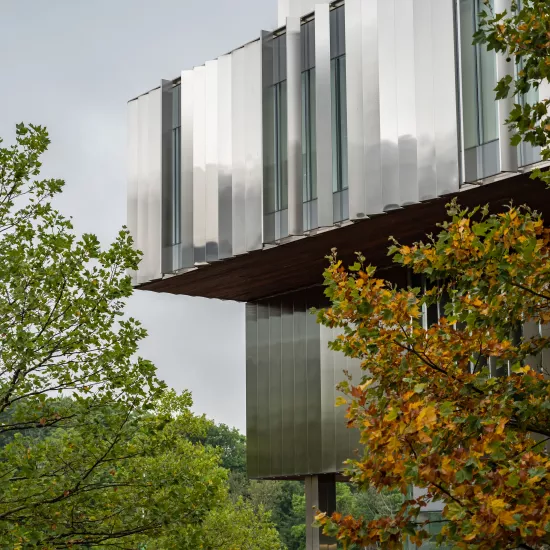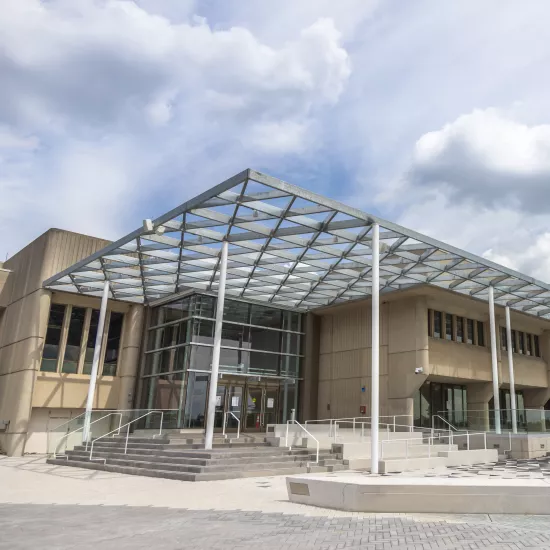Innovation meets sustainability: New, reimagined building planned for UTM

Near the north-east corner of UTM, a student learns innovative methods in cultural communications that empower their community to engage more effectively and equitably. A staff member enacts a socially responsible initiative that enables local ecosystems to flourish sustainably. A professor designs a robot capable of performing life-saving microsurgeries impossible for human hands to complete. “Robots,” says the professor to her graduate and undergraduate researchers, “can already accomplish so much today. Come into my lab and see what they’ll accomplish tomorrow.”
This vision will become reality in F2, a new building that UTM has planned for construction in a clearing beyond Outer Circle, across from Maanjiwe nendamowinan and Deerfield Hall. Named on an interim basis, with the generic abbreviation from UTM’s Master Plan, F2 reimagines the design proposed for ACT, the Arts, Culture & Technology Building formerly planned for the site.
Scheduled for completion in 2025, F2 will open new classrooms and conversation spaces that will enable student learning and collaborative discovery. It will encompass a new Central Utilities aPlant that will reduce campus carbon emissions. And it will connect several complementary units in one cohesive design: the Institute for Communication, Culture, Information & Technology; the program in computer science; and the robotics cluster and robotics laboratory environment.
These tenants form a unified vision, oriented by the technologies, cultures, and connections of a rapidly changing world. Innovation meets sustainability; traditional communications complement new media; and robotic capacity empowers human culture and ingenuity.
In implementing this vision, UTM will also continue to address the spirit of ideas raised during previous consultations. “We know that our communities invested their time, energy and care in the ACT discussions,” explains Vice-President & Principal Alexandra Gillespie. “This work has jump-started an integrated plan for capital development that will realize our campus priorities effectively and sustainably and enhance the impact of our investments in the future.”
The consultation process emphasized the urgency of creating a dedicated, stand-alone building for Indigenous students, faculty, staff, librarians and communities; UTM has now allocated the budget and resources to make this building possible. The process also highlighted the importance of strengthening reciprocal relationships with local communities in Mississauga and Peel. These insights will continue to inform conversations about UTM’s long-term plans and to shape UTM’s robust investment across all fields of knowledge.
Meanwhile, in tandem with the architectural firms Henning Larsen and KPMB, UTM will continue to pursue a design for F2 that highlights priorities expressed in UTM’s Academic Plan, UTM’s Sustainability Strategic Plan and U of T’s Strategic Research Plan: from communicating in the digital era to promoting human health, from protecting clean ecosystems to innovating technologies for the future.
That future holds a massive opportunity. “We live in a world where change occurs with unprecedented rapidity, accelerated by the creation of new media, new technologies and new platforms for culture and communication,” says Interim Chief Administrative Officer Susan Senese. “F2 gets us ready—ready to understand this future’s development and ready to lead its course.”



